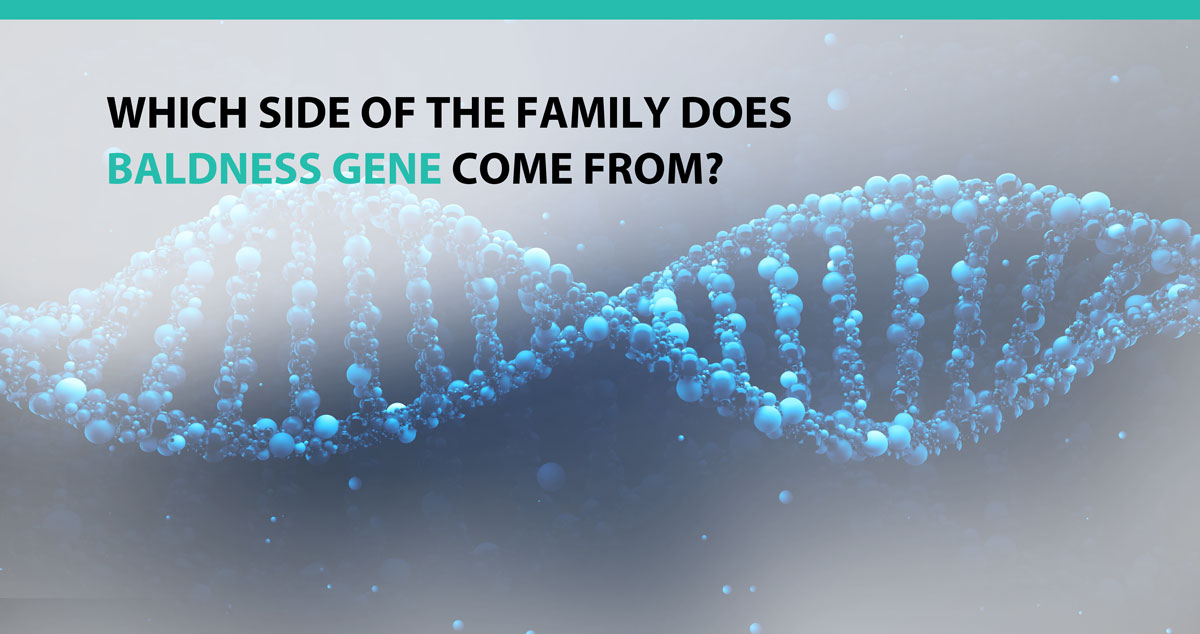
Baldness is a common problem affecting men and women alike. Most men will experience hair thinning or baldness at some point in their lives. While baldness is often hereditary, there are other causes too. The exact cause of male pattern baldness is unknown, but genetics plays a role.
However, some people inherit the gene from both parents, while others get it only from one parent. Baldness is caused by a mutation in a single gene called KITLG. This gene codes for a protein called kit ligand. The KITLG gene helps regulate hair growth and follicle development during puberty.
Baldness is inherited through a recessive gene, meaning that two copies of the gene (one from each parent) are required to develop the trait. If only one copy of the gene is present, the person has no baldness.
Your Mother Isn’t the Sole Cause of Your Baldness
One myth surrounding male pattern baldness is that men inherit the baldness gene from their mothers. Although this is partially true, it does not paint the complete picture. The X or female chromosome carries the primary baldness gene, and men inherit this X chromosome from their mothers. This makes the hereditary factor around baldness most dominant on your mother’s side.
However, the male pattern baldness gene is polygenic, which means it is caused by more than one gene. Therefore, baldness comes from both sides of the family. The X and Y chromosomes are responsible for your biological sex. Men get their X chromosome from their mothers and Y from their fathers. The AR gene carried in the X chromosome is highly associated with baldness.
However, the AR gene is not the only gene causing baldness. One review found that 63 genes are responsible for male pattern baldness, yet only six are found on the X chromosome. Also, most men experiencing baldness have a father who is also bald.
In addition, baldness genes may sometimes skip generations or people within one generation. This means you may experience baldness while your brother has full, thick hair on his head. Also, if most men in your mother’s and father’s family are bald, then there is a higher probability that you will experience male pattern baldness. Finally, although the X chromosome is the primary baldness gene, there are indications that other genes independent of the parents’ gender also cause baldness.
Male Pattern Baldness
Genetic hair loss is known as androgenetic alopecia or female/male pattern baldness. Male pattern baldness begins as an m-shaped recession. It starts at your hairline, causing forehead and temple hair loss first. It then works backward, eventually causing partial or total baldness on the sides and top of your scalp.
One study showed that chromosome 20 also played a key role in early male pattern baldness. This finding shows that both parents’ DNA is part of the baldness gene. There are treatments for baldness such as hair transplant surgery, laser therapy, oral medications, platelet-rich plasma injections, topical medications like minoxidil, and living a healthy lifestyle.
Conclusion
Besides genetics, stress, hormonal changes, trichotillomania (hair-pulling disorder), alopecia areata, and some medical conditions like ringworms cause hair loss. Although baldness is hereditary, you might be the exception in your family by having a full head of hair.
Genetic hair loss may be irreversible, but you can take some measures to maximize hair growth and slow down balding. If you are already experiencing hair loss and would love more information on the cause and available treatments, schedule a consultation with our trained practitioners at the Advanced Medical Hair Institute in Las Vegas or Reno, NV.










